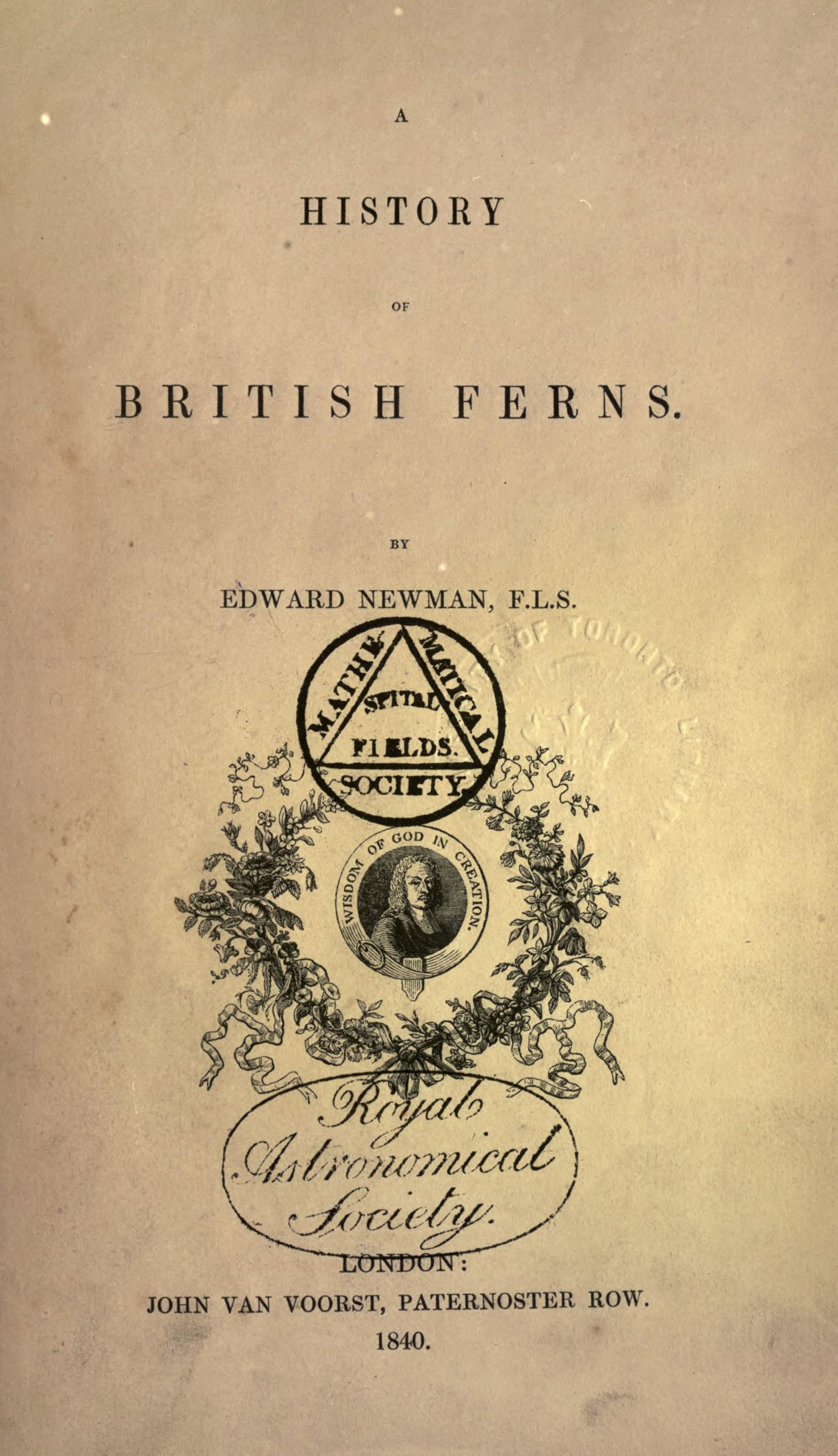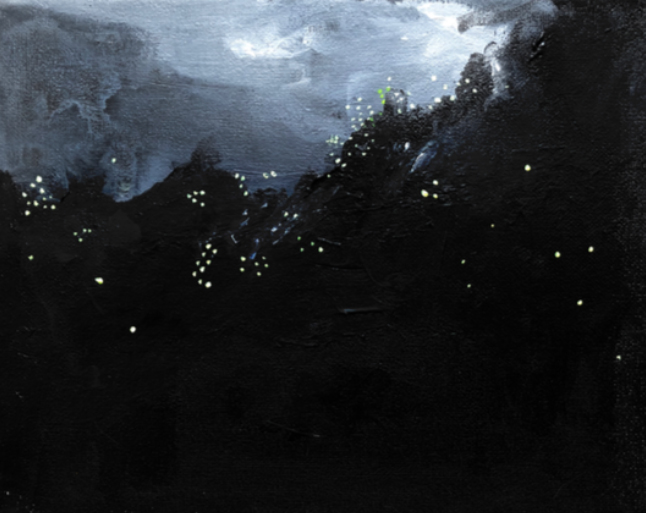Museum Studies…At Home: BHL Empowers Distance Learning for Students at NYU
The Campus is Closed: Shifting to Distance Learning
On 9 March 2020, New York University announced that it was taking classes remote, and less than two weeks later the entire campus, including our beloved Bobst Library, shut down. While I was relieved that the university was taking the pandemic seriously and acting quickly to flatten the curve, the shut-down posed serious challenges not just to teaching but to research for both me and my students.
My grad-level class, “Science, Art & Invisible Objects in Natural History Museums,” examined how natural history and anatomical collections, from the private Wunderkammern of the early modern period to the AMNH’s award-winning Hall of Biodiversity, have consistently struggled with the politics and poetics of representing objects without names, immaterial materials, and objects that, in fact, never really existed at all. Using things like gravid wombs, cosmic nebulae, rotting flora, spirits, and dinosaurs as our starting points, graduate students from NYU’s Program in Museum Studies and other departments traced the ways in which practitioners have worked to communicate, preserve, make visible, and display elusive objects of wonder and meaning across the arts and sciences.
For the class’s final assignments, students could choose to explore the history of one object—from any time period or field—through a “traditional” research paper or through a “creative” project (you can follow #unessay on Twitter for examples of projects from other schools, departments, and classes). Both options required the use of primary sources, and without access to our library, let alone museum or archival collections, I worried about whether we would need to rethink the scope of the class entirely.
Over the course of my research on 18th and 19th century natural history, I have relied on traveling to archives, often taking as many photos of sources as possible to make the most of limited time and funding. To really sit with a source, to read it line-by-line and return back to it over the course of days or weeks, requires an enormous amount of scholarly privilege—privilege that was taken away from almost everyone, suddenly and unexpectedly, when the pandemic hit.
The Biodiversity Heritage Library (BHL) has not only given me the luxury of sitting with sources, but it has opened up new research possibilities: quickly consulting books housed in collections hundreds of miles away, running full-text searches that have brought new sources into my purview, even downloading PDFs and images to work with offline or in building lectures (a real boon to anyone working remotely with unstable WiFi connections). All of these possibilities, I decided, could be leveraged to help students access primary sources at home and, indeed, to encourage new and creative ways of working with those sources outside of the boundaries of archives.
In remote one-on-one meetings with students, I laid out options of how to access sources through BHL, speaking practically about how some research plans might change using digital methodologies. All of the students, including those working on physical sciences like astronomy, also used digital sources available through our university library to round out their research.
One student leaned into these new limitations, reframing her project to ask about questions of failure is scientific representations—what might a set of images look like, she asked, if we saw all of the discarded attempts made in the process of creating the beautiful objects historians study today? Many students looked to BHL’s collections to help them explore specific themes—from the history of botany to insights from Charles Darwin’s writings and strategies for educating museum visitors about extinction.
Student Projects: Theme — History of Botany
Using BHL sources, two students worked on the history of botany, sharing sources with one another and even mailing plants to each other through the USPS.
Jelane Da Silva wrote about Pteridomania, the fern-collecting craze that swept through Britain and the U.S. in the mid-19th century. “When I advance-searched the word “fern” between the years 1837 and 1901,” Jelane notes, “the BHL cumulated countless results.” Of those, Jelane focused on Nona Bellairs’ 1865 Hardy Ferns, which “called for ‘Fern Laws’ to be set in place, imminent of the trails of damage that Pteridomania was going to leave behind”, and Edward Newman’s 1840 British Ferns, one of many books that “encouraged the overcollection of ferns and enriched the desire for what was ‘in’—the fad, the fern—but not necessarily the desire to be a naturalist.”

Title Page, A History of British Ferns (1840), by Edward Newman. Reference for: Jelane Da Silva, “Just Ferns,” Research Paper, 2020. Da Silva writes: “To make describing and identifying Nature’s objects easier for all, plants and animals were classifiable by a “sexual system” that separated natural bodies based on their apparent physical features… On the basis of sight, humans were given the opportunities to classify Nature’s objects and introduce them to their historicity. This cultural history tempts nonconformity of sympathies and antipathies. The ways in which Nature’s objects have been systemized, historicized, and theorized by humans has obscured and spoiled the potential power for humankind to access the deeply rooted values and hear the intrinsic voices of Nature and Nature’s objects… Historically, in the case of Pteridomania, this was a burden upon the fern’s livelihood, inner ontological beings and further removed humanity from the natural world.”
Adriana Ciocci produced a series of cyanotypes, à la Anna Atkins, in “recording and archiving a common plant, the dandelion, to emphasize the uniqueness of each specimen at different stages of preservation and decay.” Adriana relied on Joseph Dalton Hooker’s Botany of the Antarctic Voyage, among other BHL sources, to “study how plants were illustrated two-dimensionally during the 19th century” while looking for “depictions of dandelions at various stages of development.” Embracing the art of imperfection, her frustrations with limited access to the materials she had planned to work with became part of the project itself.

Adriana Ciocci (Experimental Humanities), “Dandelion: Archive of an Amateur,” cyanotypes, 2020. Ciocci writes: “In my creative project, through a series of unforeseen hurdles of acquiring dandelion specimens, learning the process of cyanotyping, and lack of access to resources I became focused on recording failures that would otherwise become archival silences. By preserving imperfect specimens using a process which distorts perception through shifting shadows, I created unpredictable yet archivally stable prints. My aim is to prove trials and failures are worthy of recording since they are an inevitable part of scientific and artistic practices.”
Student Projects: Theme — Insights from Darwin’s Writings
Charles Darwin’s works appeared in several projects. Yukie Zheng mined his 1871 Descent of Man and 1872 Investigation of the Emotions in Man and Animals to investigate the role that photography played in evolutionary constructions of race, pulling out physiognomic threads in his writing.

Title Page, The Descent of Man (1871), by Charles Darwin. Reference for: Yukie Zheng (Visual Arts Administration), “Changes in Immutability,” Research Paper, 2020. Zheng writes: “In the late nineteenth century, Darwin published the Origins of the Species (1859) and the Descent of Man (1871)… Even though Darwin wrote this book in a rational and scientific way to build his theory, the public may use Darwin’s theory to construct the racial differences to justify their certain behaviors… This article will focus on the general group of people of color when talking about the Darwinism and social Darwinism, but with major emphasis on the black people. It undoubtedly helps the public to build the conception of race. The social oppression that we often see in the history of nineteenth century originates from both the cultural differences and scientific beliefs.”
Tomas Uriburu turned to Darwin’s expedition aboard the H.M.S. Beagle to explore the long and poetic history of bioluminescence alongside theoretical issues of darkness and precarity and ways forward amidst uncertainty. Encountering bioluminescent marine life off the coast of South America, Darwin wrote that “as far as the eye reached, the crest of every wave was bright, and the sky above the horizon, from the reflected glare of this livid flames, was not so utterly obscure as over the vault of heavens” (167). Weaving Darwin’s words together with those of earlier naturalists—Erasmus Darwin, Alexander von Humboldt, and John Bowring, as well as the 20th century specialist Edmund Newton Harvey, Tomas created an illustrated history of the magical phenomenon for which “darkness is a necessary condition.”

Tomas Uriburu, “The Future is Dark,” creative research paper with painted illustrations, 2020. Uriburu writes: “In this paper, I won’t focus on the lights that make things appear as whole but on the vulnerable, enigmatic, mysterious, undetermined, dim, and fragile lights that activate certain types of curiosities. I am not interested in tracing the lights that make life predictable or understandable. Instead, I am interested in looking for lights that make life uncertain and incomplete.”
Student Projects: Theme —Extinction and Museum Education
In modeling the extinct butterfly species Glaucopsyche xerces (the Xerces blue) and the deerwood flora native to coastal dunes of San Francisco, Rachel Leckman was inspired by the BHL blogpost “Breathing Life into a Museum Exhibit about Extinction.” Using materials like goldbeater skin, compressed pastels, compressed iridescent watercolor, synthetic hair, and lace, Rachel presented a case for lifelike models as a way of educating museum visitors about the species that we have lost to climate change and habitat destruction, relying on recent sources like UNEP’s “Environment on the Edge” but also historic sources about searching for lost animals like the Explorations and Field-Work of the Smithsonian Institution in 1937-1938.

Rachel Leckman, “Xerces Blue Model,” goldbeater skin, compressed pastels, compressed iridescent watercolor, sculpey, lace and synthetic hair, 2020. Leckman writes: “For my final project I created models of Xerces Blue butterflies (Glaucopsyche xerces) accompanied by a model of a Deerwood (Lotus scoparius) branch. This species of butterfly was native to the coastal dunes of San Francisco and went extinct around 1941-1943. For my model I recreated this small iridescent butterfly using goldbeater skin, compressed pastels, compressed iridescent watercolor, sculpey, lace, and synthetic hair. The branch the butterflies are feeding and laying eggs on is made out of sculpey and acrylic paint. This type of model, with a more complete and narrative imitation of the natural habitat, could be used in museums as an educational facsimile of the past to make examples of human caused extinction better known.”
Planning for a Future of Distance Learning
Much has changed since March, and it seems that new information about when—and whether—institutions will reopen changes week by week. It’s unclear, at this point, whether NYU will go back to in-person classes in September and whether graduate students starting on their theses will have access to primary sources back on campus or at New York’s museums and cultural heritage sites. Much research will be done using digital sources in the meantime.
On my end, I’m using the success of working with digital sources as a model for how I’ll enter next semester—for how I’ll frame assignments, advise early-stage thesis research, and continue to conduct my own work, having canceled research trips for the foreseeable future. Our subject specialist librarian has been instrumental in helping us navigate new ways of working with digital sources, and it’s clear that some of these methodologies are, thankfully, here to stay.
Reinterrogating who has access to primary sources all the time—not just during periods of crisis—seems key, and I hope that resources like the Biodiversity Heritage Library will be there to connect scholars at any stage with the rich sources and new research methodologies that promise a stronger and more inclusive historical field writ large.




Leave a Comment